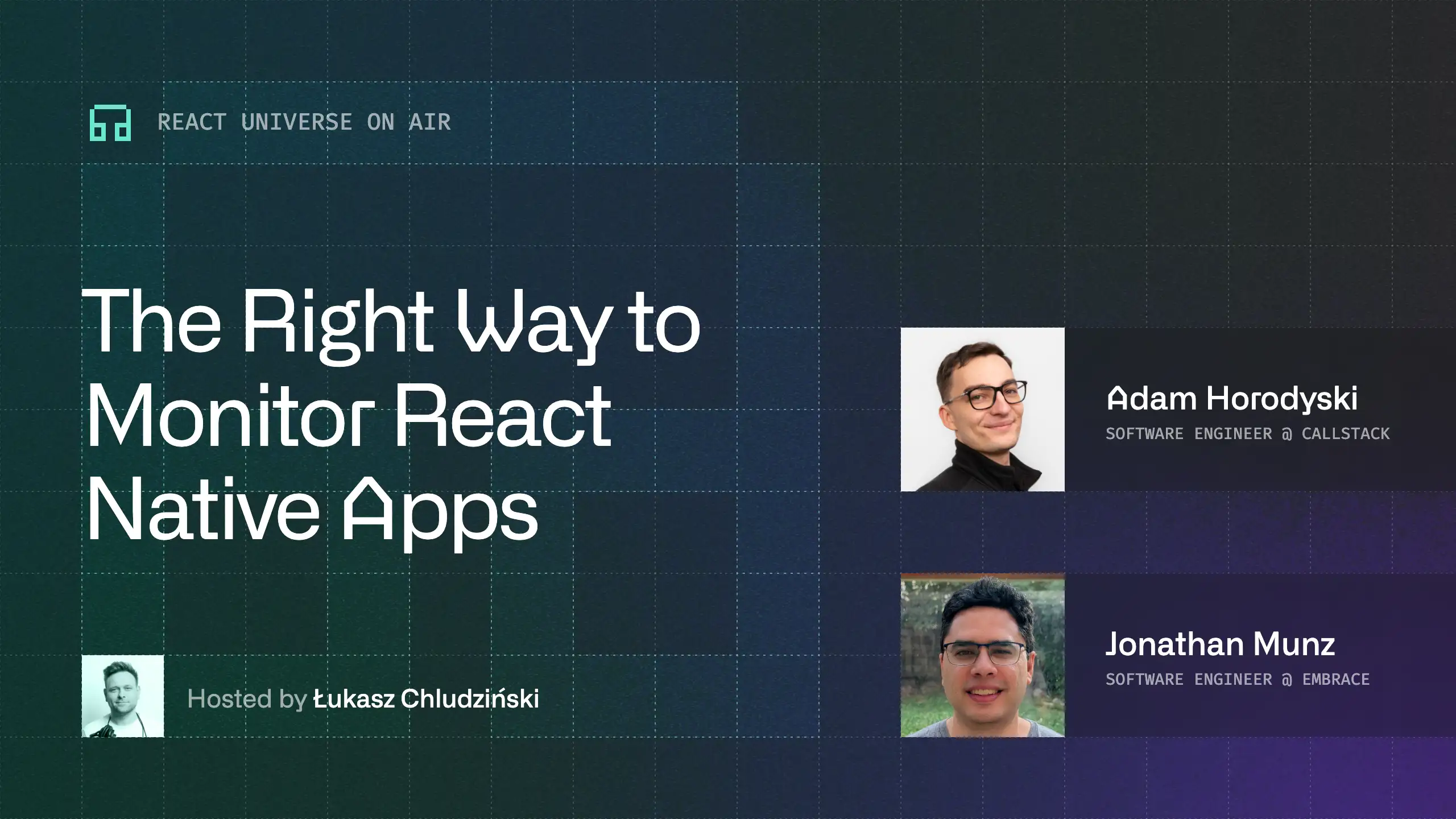Observability is critical for understanding how apps behave in the wild, but in React Native, platform fragmentation, diverse device conditions, and varied network environments add complexity. With this React Universe On Air episode, we want to bring clarity to the topic, covering what observability means, how OpenTelemetry works, and why standardization matters for mobile.
Guest & episode summary
To do so, Łukasz Chludziński interviews:
- Jonathan Munz, Senior Software Engineer at Embrace, who brings experience in client-side observability and OpenTelemetry adoption, along with insights on the Embrace React Native SDK and its integration into broader observability pipelines
- Adam Horodyski, React Native Expert at Callstack, who leads observability and telemetry work for our clients and co-creates the React Native OpenTelemetry library.
Their discussion spans the nuances of implementing observability in a fragmented mobile ecosystem, bridging the gap between open standards and production-grade solutions.
Understanding observability vs. OpenTelemetry
Łukasz and hit guests clarify how observability is the end goal (knowing what’s happening in your app in real-world usage), while OpenTelemetry is the means to achieve it. They discuss signal types (spans, logs, metrics), the OTLP protocol, and why aligning on shared semantics is critical for combining client-side and backend data.
Challenges in mobile & React Native observability
From unpredictable device conditions and network variability to the complexity of tracking user sessions across platforms, Adam and Jonathan explain why mobile instrumentation is harder than server-side telemetry. The episode also highlights the lack of consistent auto-instrumentation for popular React Native libraries, and how this slows adoption.
Tools, standards & community efforts
Jonathan explains how Embrace leverages OpenTelemetry to keep data portable while delivering ready-to-use SDKs. Adam shares the vision behind React Native OpenTelemetry as an abstraction layer that hides platform-specific complexity. Together, they outline the role of open standards in enabling interoperability, the need for semantic conventions tailored to mobile, and how community-led efforts can accelerate auto-instrumentation for navigation, state management, and other key libraries.
What you’ll learn
- How observability and OpenTelemetry differ, and where they overlap in practice.
- The three signal types in OpenTelemetry (spans, logs, metrics) and their mobile use cases.
- Common pitfalls in DIY instrumentation for mobile apps.
- Why standardizing on OTLP (OpenTelemetry Protocol) improves interoperability between tools.
- How community involvement accelerates auto-instrumentation and best practices for React Native.
- The role of vendor solutions like Embrace in reducing developer overhead while keeping data portable.
Resources
- Łukasz Chludziński on X, Bluesky, GitHub, and LinkedIn
- Adam Horodyski on X, GitHub, and LinkedIn
- Jonathan Munz on GitHub and LinkedIn
- Embrace: User-focused observability for mobile and web
- Embrace React Native SDK: Open-source SDK for React Native apps
- Embrace Community Slack: Connect with Embrace engineers and other developers
- CNCF Community Slack: Join the Cloud Native Computing Foundation community
- React Native OpenTelemetry: Library for adopting OpenTelemetry in React Native
Learn more about Observability
Here's everything we published recently on this topic.







